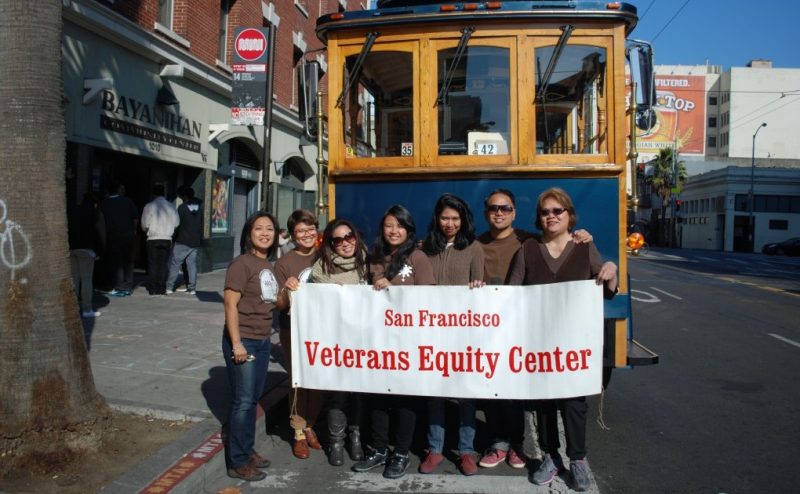Every day Filipino WWII veterans, or the spouses of veterans, gather at the Veterans Equity Center in San Fransico. The center acts as a liaison to connect 2500 veterans in the Bay area with housing, legal assistance, and health care services. Lately, the center has been getting questions about a new program reuniting Filipinos who served in the U.S. military in the 1940s with their children. The program is called the “Filipino World War II Veterans Parole Program.” Before this program, it could take up to 20 years to bring their children to the U.S.
The US Citizenship and Immigration Services (USCIS) have estimated that 2,000 to 6,000 veterans may benefit from the program. Advocates have embraced the new program since its inception in June. At the same time, they worry that it has arrived too late for many.
Lou Tancinco is an immigrant attorney in San Francisco. He says that the people who qualify for the program are all in their 80s and 90s. They need their children to help care for them. Too many others have died already.
“[The] parole program is very important for the Filipino veterans who suffered long years of separation from their family members, waiting for their petitions to become current. Just like other immigrants, family unification is the ultimate goal,” says Tancinco. “I’m talking about the veterans who have been in isolation for a long time. I’m talking about the widows who don’t have any family members here.”
Approximately 250,000 Filipino soldiers answered a call-to-arms from the U.S. and the Philippine governments during the Second World War. The Philippines were a colony of the U.S., and the looming threat of Japanese occupation galvanized many. The Filipino soldiers absorbed into the United States Armed Forces of the Far East.
There were four groups that the Filipinos joined – the Old Philippine Scouts, the Commonwealth Army of the Philippines, Guerrilla Service, and the New Philippine Scouts. Some of the groups served alongside U.S. Troops; others were formed after the war to help maintain the U.S. presence in Asia.
Filipino soldiers were promised U.S. citizenship and consideration for military benefits. Later, however, the benefits were denied by lawmakers. According to Tancinco, the Filipinos are the only group that was denied full U.S. veteran status out of groups from 60 other countries that served with the U.S.
In 1990, Congress passed a law that allowed Filipino veterans to immigrate to the US and have the option of becoming citizens. Their families, however, had to enter the immigration system with its long queues.
In 2009, Congress passed another law that provided one-time compensation to the Filipino WWII veterans. In California this year, Filipino WWII veterans have been included in the high school history curriculum.
According to Tancinco, there are a limited number of visas allowed per year for a non-immediate family. The non-immediate family includes siblings, married children or children over 21 years old. This has created a huge backlog. This fiscal year, the USCIS will issue a maximum of 226,000 “family-sponsored preference visas,” with a limit of about 25,620 per country. The Philippines had 400,000 people on the waitlist last year.
Spouses of Filipino WWII veterans have had a hard time as well. When a veteran dies, his visa petition will end. With the new program, the spouse can petition for a visa for family members so there is still hope that they can be with their family.
Tancinco says that there are limitations to the program as well. It is a complicated process and many of the veterans and their spouses he has spoken to do not fully understand it.
“They’ve reached a point with their health condition that they can no longer comprehend whether or not this is really good for them anymore. They’ve just gotten used to waiting.”
